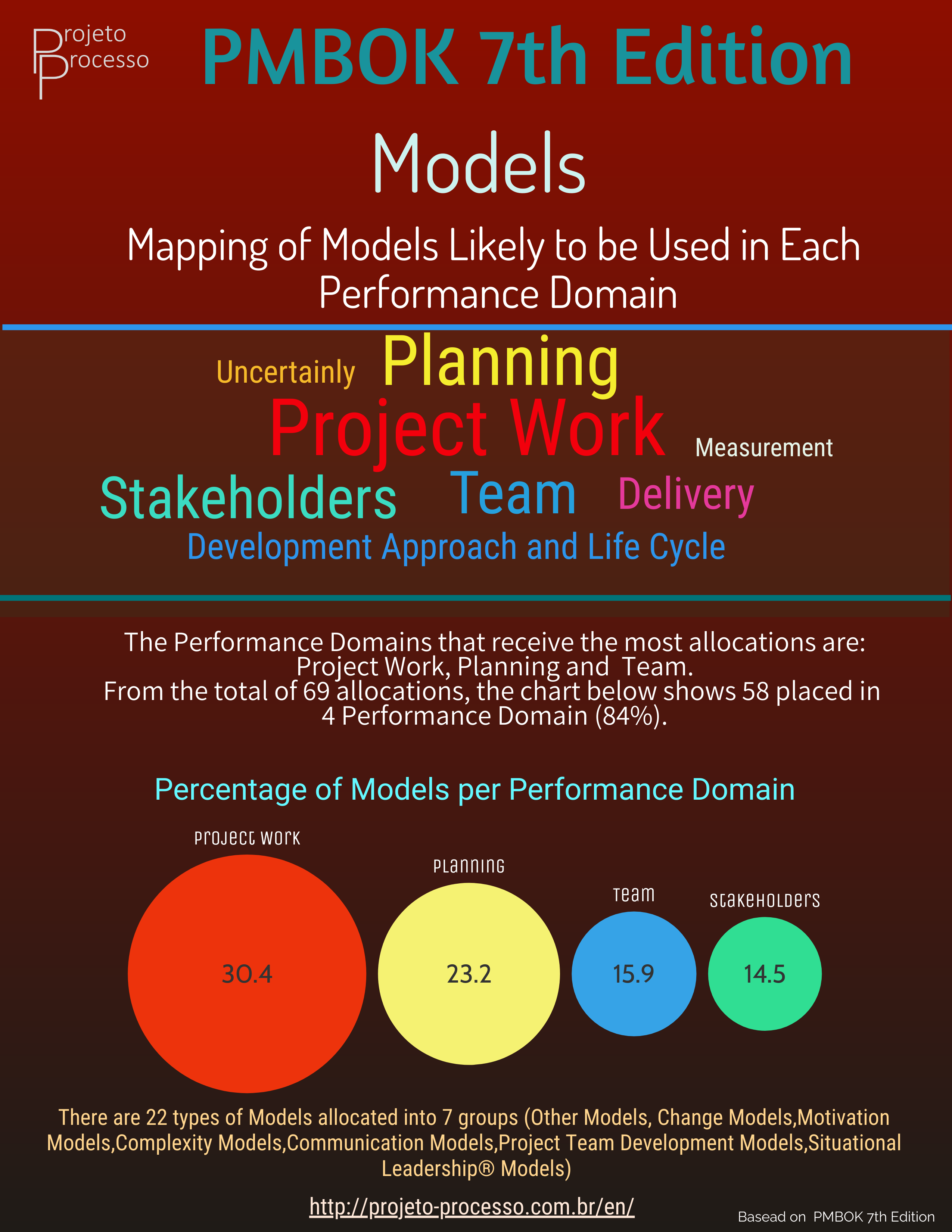

The seventh edition of the PMBOK has a modification that should be considered by users of the guide.
The inclusion of item 4 “Models, Methods and Artifacts” seeks to list those with the most common use. This version of the guide recognizes the existing relationship of these three items with the tools and techniques introduced in earlier versions. However, it is useful to have support in the last two versions to have a better understanding of how this version works.
It is healthy to remember that the sixth edition of the PMBOK brought “Appendix X6 – Tools and Techniques”, something that the project management community already felt the need. In this version, there is no definition for such terms, so the definitions are placed on this page.
Tool: something tangible such as a template or software program used in performing na activity to produce a product or a result.
Technique: a defined systematic procedure employed by a human resource to perform na activity to produce a product or result or deliver a service, and that may employ one or more tools.
Considering that models, methods, and artifacts (PMBOK 7 th ) are also intrinsically linked to what the guide calls “Tailoring” in its item 3, we must pay attention to modifying this definition.
The inforgraphic below shows these definitions, searching for a way to warn out about the differences that exist between previous versions and seventh version. It turns relevant to consider that the guide recognizes in its item 3 that we don’t have any publication that capture all the tools and techniques or practices which the teams of projects can use.
Tailoring - PMBOK 6ª Edition: determining the appropriate combination of processes, tools, techniques, and life cycle phases to manage a project.
Tailoring - PMBOK 7 th Edition: the deliberate adaptation of approach, governance, and processes to make them more suitable for the given environment and the work at hand.
Model: a model is a thinking strategy to explain a process, framework, or phenomenon.
Method: is the means for achieving an outcome, output, result or product deliverable.
Artifact: can be a template, document, output, or product deliverable.
The reason we focus on these items here is because they are at the heart of the “how to”, “how to get the result” and the concept of what will be delivered.
From the definition that guide provides us which says that “an artifact that is produced, is quantifiable, and can be either na end item in itself or a component item”, such word (artifact) automatically refers to the sixth version with output of a process, a deliverable.
A intenção do grafico é selecionar um dos 3 itens (modelos, meétodo ou artefato) e deixar os dominios de desempenho no eixo X aparecer com as quantidades em cada um deles . Exemplo: seleciona “modelo” e deixa todos dominios de desempenho. Daí aparecerá o eixo X com oito itens.
Based on the established culture of previous editions of the PMBOK, the relationship that models, methods, and artifacts have with the previous version of the guide is placed here for a faster and more effective understanding.
Thus, for for a faster understanding, it is worth noting the relationship of models with tools and techniques, since in this latest version we have seven groups of models, these are broken down into 22 items. In other words, types of models are placed and subclassified into 7 items, the 22 items exposed refer to how to put into practice the 7 groups of models presented by the guide.
It is important to keep in mind that the word “model” was widely used in the sixth edition of the guide and considered an asset of organizational processes.

The same mechanism is used for methods, as there are 4 subgroups composed of 60 items, which are precisely the tools and techniques for executing a method among the 4 classifications. Likewise, artifacts are classified into 9 categories, broken down into 76 items.
It is healthy to remember that in the knowledge area called Schedule Management in the sixth edition of the guide, the view that puts methods as something used to build a model is clear, showing the relationship that these 3 items discussed here have with the tools and techniques of previous editions of the PMBOK.
The above observations are based on mapping the use of models, methods, and artifacts in each performance area, placed in the guide in tables 4.1, 4.2 and 4.3.

Regarding Artifacts, we have a total of 9 groups housing 76 items. These 76 items are allocated in 8 performance domains, so they appear 210 times.
Objectively, the processing existing between models and methods causes the output, a product, which we can understand as the artifact.
This term was used extensively in Communications Management of the sixth edition. In seventh version, it stands out, in a way that we see this item encompassing documentation, management plans, performance reports and contracts, permeating the entire project.
